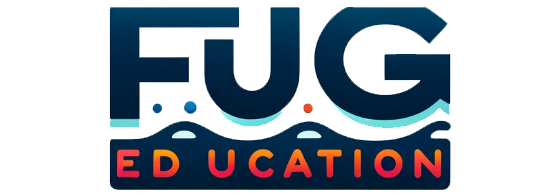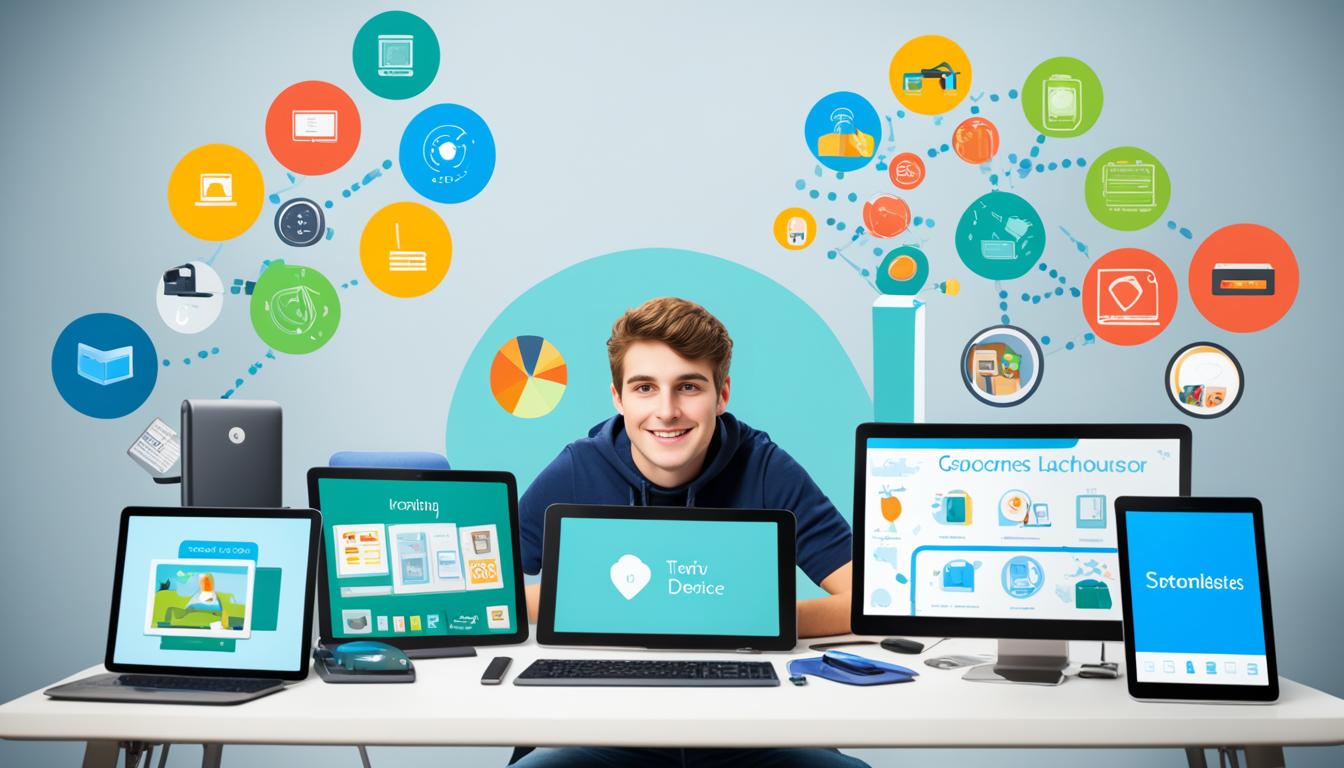Personalized learning is transforming the landscape of education, providing tailored educational experiences that cater to the diverse needs of individual students. This article will delve into the role of technology innovations in shaping personalized learning and revolutionizing the way we approach education.
By leveraging advancements in AI, data analytics, and machine learning, educators can now craft individual learning plans that adapt to the unique strengths, weaknesses, and learning styles of each student. Customizable educational resources, powered by intelligent tutoring systems, provide personalized guidance and support, ensuring that students receive the right content at the right time.
Throughout this article, we will explore the emergence of personalized learning in modern education and its far-reaching impact. We will discuss the tools and platforms enabling adaptive curriculum, the integration of virtual reality for immersive learning experiences, and the transformative role of interactive digital tools. Additionally, we will highlight the latest trends in educational technology that are preparing us for the schools of tomorrow.
Join us on this educational journey as we uncover how technology is revolutionizing education and tailoring the learning experience to each individual student.
Key Takeaways:
- Personalized learning recognizes the unique needs, strengths, and learning styles of individual students.
- Technology innovations are revolutionizing education, enabling tailored educational experiences.
- AI, data analytics, and machine learning play a crucial role in crafting individual learning plans.
- Intelligent tutoring systems and customizable educational resources provide personalized guidance and support.
- Virtual reality, interactive digital tools, and emerging technologies enhance personalized learning experiences.
The Emergence of Personalized Learning in Modern Education
This section will provide an overview of the emergence of personalized learning in modern education. It will explore the shift from traditional one-size-fits-all approaches to education to a more student-centric and adaptive model.
The adoption of new technologies has paved the way for personalized learning, revolutionizing the education landscape. With the advent of digital platforms and data analytics, educators are now able to tailor educational experiences to meet the unique needs of each student.
Personalized learning offers several benefits for students. By catering to their individual strengths, interests, and learning styles, it increases engagement and motivation, fostering a deeper understanding of concepts. This student-centric approach also promotes critical thinking and problem-solving skills.
Furthermore, personalized learning has been shown to improve academic outcomes. By addressing specific learning gaps and providing targeted support, it helps students achieve their full potential. In a society characterized by diverse learners, personalized learning plays a crucial role in ensuring educational equity.
As the importance of tailoring education becomes more apparent, personalized learning is gaining recognition in modern education. Institutions are embracing technological innovations to create adaptive learning environments that cater to the diverse needs of their students.
In the next sections, we will delve into the impact of artificial intelligence (AI) on personalized learning, the role of data analytics and machine learning in adaptive education, and the recent advancements of educational technology that are driving this transformative shift in education.
Understanding the Impact of AI on Personalized Learning
This section explores the profound impact of AI on personalized learning. Through the integration of artificial intelligence, education is being revolutionized to cater to the unique needs of individual students. AI offers a range of transformative capabilities that enhance the effectiveness and personalization of educational experiences.
The Role of AI in Crafting Individual Learning Plans
AI plays a pivotal role in crafting individual learning plans that cater to the specific needs and learning styles of students. By leveraging data analytics and machine learning techniques, AI can analyze vast amounts of data and generate insights that inform personalized instruction. This enables educators to tailor their teaching approaches, ensuring that students receive targeted support and resources to maximize their learning potential.
Data Analytics and Machine Learning: Foundations for Adaptive Education
Data analytics and machine learning serve as the foundations for adaptive education, where AI algorithms analyze student data to provide personalized feedback and guidance. By continuously monitoring student progress and performance, AI systems can adapt the learning environment in real time, offering tailored recommendations, resources, and interventions that address the unique challenges and strengths of each student.
From Intelligent Tutoring Systems to Customizable Educational Resources
Intelligent tutoring systems are another application of AI in personalized learning. These systems utilize AI algorithms to provide individualized guidance and support to students, acting as virtual mentors. Furthermore, customizable educational resources empower learners to personalize their educational journey by selecting content, assignments, and assessments that align with their interests, goals, and preferred learning modalities.
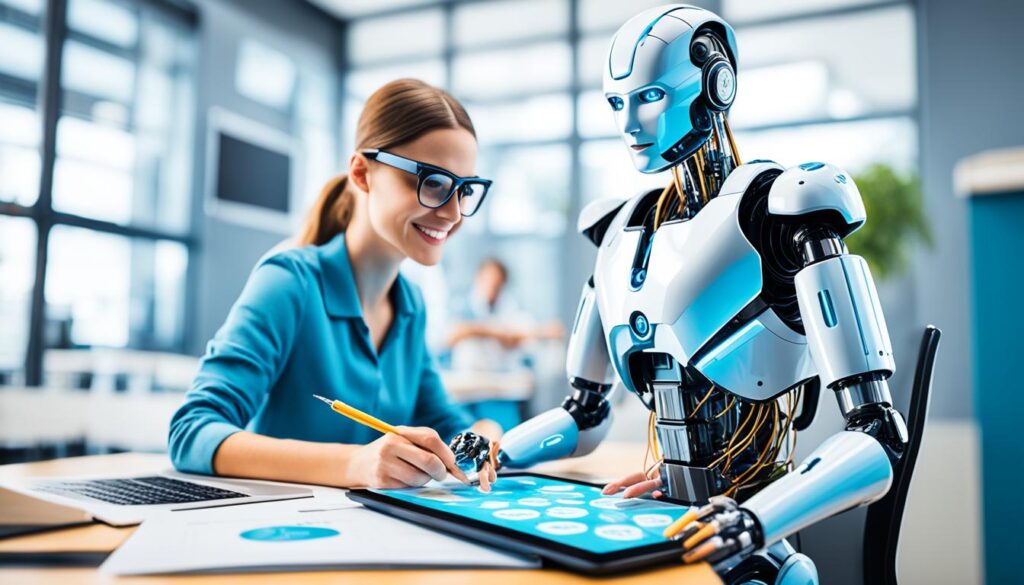
EdTech Advancements: The Shift from Traditional Classroom Teaching
In today’s digital era, educational technology (EdTech) has revolutionized traditional classroom teaching methods, paving the way for innovative and personalized learning experiences. With the rapid advancement of technology, educators now have access to a wide range of tools and resources that enhance student engagement, improve accessibility to education, and cater to individual student needs.
EdTech advancements have paved the way for a more interactive and student-centered approach to education. Gone are the days of passive learning and one-size-fits-all instruction. Instead, technology has opened doors to personalized learning, where students can learn at their own pace, explore their interests, and receive targeted support.
By leveraging EdTech tools, educators can create dynamic and immersive learning environments that capture the attention and interest of students. Interactive digital content, such as educational apps, gamified learning platforms, and multimedia resources, make learning more engaging and enjoyable for learners of all ages.
Furthermore, EdTech innovations have expanded access to education beyond the confines of the traditional classroom. Online learning platforms and virtual classrooms provide opportunities for remote and distance learning, enabling students to access educational resources and collaborate with peers from anywhere in the world.
With the aid of EdTech, teachers have access to valuable data and analytics that allow for targeted interventions and personalized feedback. By analyzing student performance and progress, educators can identify areas of weakness and tailor instructional strategies to meet individual student needs.
The advantages of EdTech advancements in transforming traditional classroom teaching:
- Enhanced student engagement through interactive and immersive learning experiences.
- Improved accessibility to education through online learning platforms and virtual classrooms.
- Catering to individual student needs through personalized learning paths and targeted interventions.
As technology continues to advance, the potential for EdTech to revolutionize education and further enhance personalized learning experiences is limitless. By embracing these advancements, educators can shape the future of education, preparing students for success in an ever-changing digital world.
Educational Software: The Tools Driving Personalized Learning Success
In today’s rapidly evolving educational landscape, the role of educational software in driving personalized learning success cannot be ignored. Educational software provides the necessary tools and resources to create tailored learning experiences for students, allowing them to thrive and reach their full potential.
Platforms Enabling Adaptive Curriculum
One of the key components of personalized learning is the ability to adapt the curriculum to meet the individual needs of each student. This is made possible through platforms that offer adaptive curriculum, allowing students to progress at their own pace while accessing content that is tailored to their specific learning requirements. These platforms use advanced algorithms and data analysis to identify areas where students need additional support or challenges, enabling a personalized and effective learning journey.
Technologies Behind AI-Integrated Learning Environments
Artificial intelligence (AI) plays a crucial role in the development of personalized learning environments. AI algorithms are integrated into learning platforms to provide personalized recommendations and support to students, enhancing their learning experiences. These AI-integrated learning environments analyze data to understand students’ strengths, weaknesses, and learning preferences, allowing for a more targeted and individualized approach to education.
By leveraging educational software and AI-driven technologies, educators can create dynamic and engaging learning environments where students can thrive. The integration of adaptive curriculum platforms and AI algorithms ensures that students receive the support and resources they need to succeed in their educational journey.
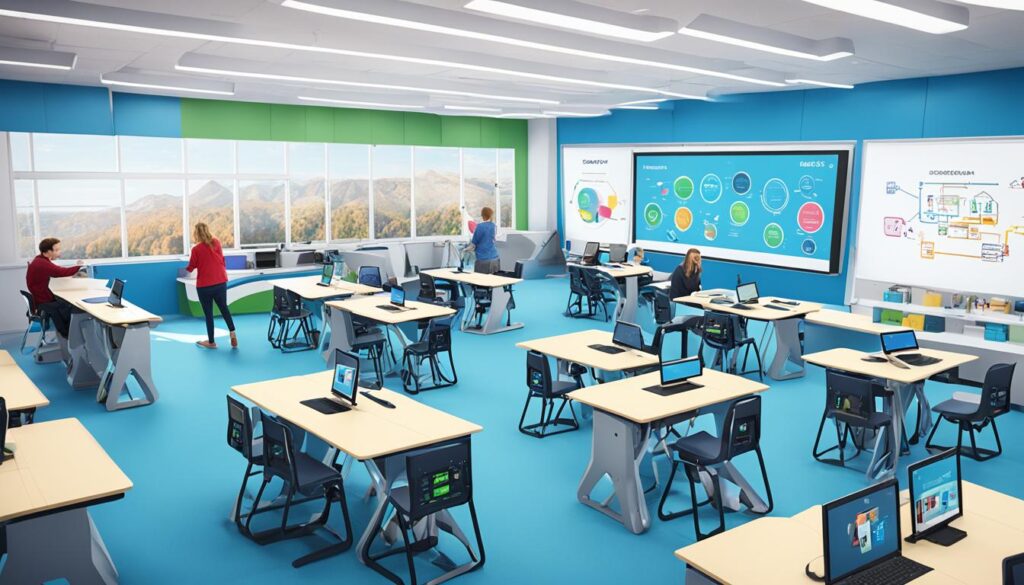
| Educational Software Features | Benefits |
|---|---|
| Adaptive curriculum platforms |
|
| AI-integrated learning environments |
|
Innovations in Education Technology
In today’s rapidly evolving educational landscape, innovations in education technology are revolutionizing the way students learn and teachers instruct. These advancements are not only shaping personalized learning experiences but also creating more engaging and effective educational environments.
One of the key innovations in education technology is the introduction of smart classrooms. These technologically enhanced learning spaces are equipped with interactive displays, virtual reality tools, and collaborative platforms. They provide students with immersive and interactive learning experiences, allowing them to explore complex concepts in a hands-on and engaging manner.
“Smart classrooms have transformed the traditional learning environment and empowered students to take ownership of their education, fostering critical thinking and creativity.” – Educator at XYZ School
Another area of innovation in education technology is the development of digital learning tools. These tools encompass a wide range of applications, including personalized learning platforms, online educational resources, and educational apps. They provide students with access to customizable learning materials, tailored assessments, and real-time feedback, allowing for a more personalized and adaptive learning experience.
Interactive media is also playing a significant role in personalized learning. The integration of multimedia elements such as videos, simulations, and interactive presentations enhances student engagement and knowledge retention. These dynamic learning resources cater to different learning styles and enable students to explore concepts at their own pace, making learning more enjoyable and effective.
As education technology continues to evolve, educators and institutions are embracing innovative approaches to meet the diverse needs of students. From virtual reality in the classroom to AI-driven instruction, these advancements are reshaping the educational landscape and creating endless possibilities for tailored and meaningful learning experiences.
| Innovation | Description |
|---|---|
| Smart Classrooms | Technologically enhanced learning spaces equipped with interactive displays, virtual reality tools, and collaborative platforms. |
| Digital Learning Tools | Includes personalized learning platforms, online educational resources, and educational apps that provide customized learning materials, assessments, and feedback. |
| Interactive Media | Multimedia elements such as videos, simulations, and interactive presentations that enhance student engagement and knowledge retention. |
Online Learning Platforms: Expanding Access to Tailored Education
This section explores the role of online learning platforms in expanding access to tailored education. These platforms have revolutionized the way students learn and interact, providing personalized learning experiences beyond the traditional classroom setting.
Virtual Classrooms and Their Role in Personalized Learning
Virtual classrooms have emerged as a key component of online learning platforms, enabling personalized interactions and dynamic learning experiences. Through virtual classrooms, students can engage in real-time discussions, collaborate with peers, and receive individualized guidance from instructors. The flexible nature of virtual classrooms allows students to learn at their own pace, ensuring tailored education that suits their unique needs and learning styles.
Virtual classrooms provide a conducive environment for personalized learning by leveraging various interactive tools and features. These include live video conferencing, real-time chat, interactive whiteboards, and breakout rooms for small group discussions. By simulating the traditional classroom setting in a virtual space, students can actively participate in discussions and activities that align with their specific learning goals and preferences.
Furthermore, virtual classrooms enable students to connect with educators and classmates from around the world, fostering a global learning community. This diverse and inclusive environment promotes cultural understanding, enhances communication skills, and exposes students to different perspectives, enriching their overall educational experience.
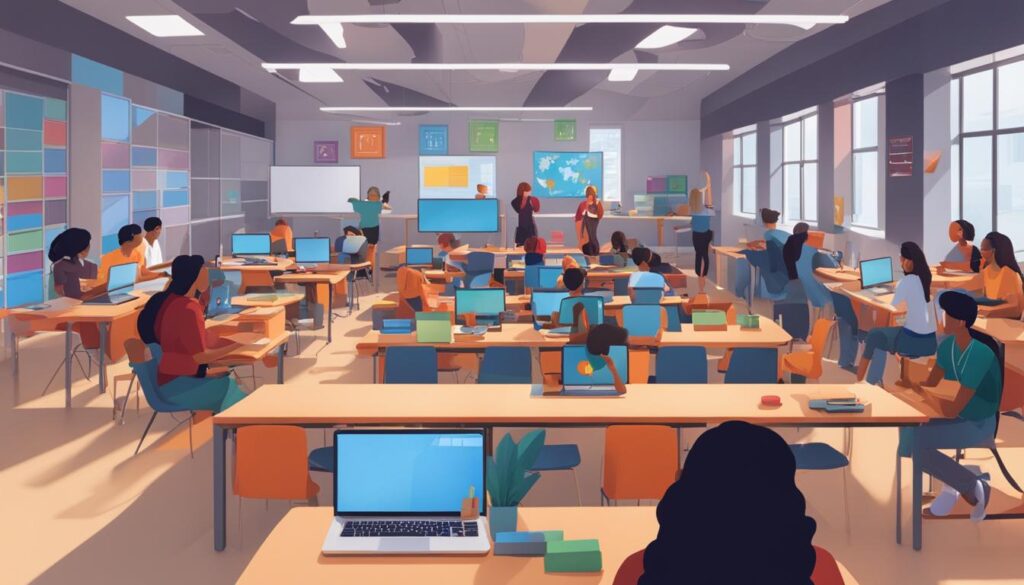
Online Assessment Tools for Customized Educational Feedback
Online assessment tools play a crucial role in providing customized educational feedback to students. These tools leverage technology to assess student performance, track progress, and offer tailored guidance to support individual learning journeys.
With the help of online assessment tools, educators can design and administer various types of assessments, including quizzes, tests, and assignments. These tools automate the grading process, ensuring timely feedback and reducing the administrative burden on teachers. Through detailed analytics, educators gain insights into student strengths, weaknesses, and areas that require further development.
Online assessment tools also enable students to receive personalized feedback that is specific to their learning needs. Instead of generic comments, students can access detailed feedback on their performance, highlighting areas of improvement and providing actionable suggestions. This personalized feedback empowers students to take ownership of their learning, fostering a growth mindset and facilitating continuous improvement.
Moreover, online assessment tools allow for adaptive assessments that dynamically adjust based on student responses. This adaptive approach ensures that students are challenged at an appropriate level, promoting deeper understanding and mastery of concepts. By tailoring assessments to individual learning needs, educators can create a more inclusive and supportive learning environment, further enhancing the effectiveness of personalized education.
Virtual Reality in Education: Creating Immersive Learning Experiences
In today’s rapidly evolving educational landscape, the integration of virtual reality (VR) technology is transforming the way students learn. VR creates immersive learning experiences that engage students on a deeper level, fostering a better understanding of complex concepts. By combining immersive visual and auditory elements, VR enables students to explore virtual worlds, simulations, and scenarios that are otherwise difficult or impossible to access.
One of the key benefits of incorporating VR in personalized learning is the increased motivation it brings to students. Traditional classroom settings often struggle to captivate students’ attention, leading to disengagement and limited enthusiasm for learning. However, with VR, students are transported into a virtual environment that stimulates their senses and captures their interest. This high level of engagement enhances the learning experience and keeps students motivated to actively participate in their educational journey.
Another advantage of VR in personalized learning is its ability to enhance information retention. Studies have shown that immersive learning experiences facilitated by VR technology lead to better knowledge retention compared to traditional teaching methods. When students can interact with and manipulate virtual objects or explore virtual environments, their learning becomes more experiential and memorable. This hands-on approach to learning deepens their understanding and enables them to retain information for longer periods.
Moreover, VR in personalized learning offers a unique opportunity for students to practice real-world skills in a safe and controlled environment. For example, in medical education, VR simulations allow aspiring healthcare professionals to practice complex procedures without the risk associated with real patients. Similarly, in engineering or architecture, VR enables students to design and experience virtual prototypes, facilitating iterative and hands-on learning.
By harnessing the power of virtual reality, personalized learning experiences become more engaging, effective, and tailored to individual student needs. As technology continues to advance, the adoption of VR in education is expected to grow, providing students with even more immersive and interactive learning opportunities.
| Benefits of Virtual Reality in Education | |
|---|---|
| Increased Motivation | Engages students on a deeper level, fostering enthusiasm for learning. |
| Enhanced Information Retention | Immersive experiences lead to better knowledge retention compared to traditional methods. |
| Safe and Controlled Environment | Allows practice of real-world skills without risks associated with real-life scenarios. |
| Experiential Learning | Enables hands-on exploration of virtual environments and objects, deepening understanding. |
Transforming Classroom Experiences with Interactive Digital Tools
As technology continues to advance, interactive digital tools are revolutionizing classroom experiences and transforming traditional approaches to education. These tools play a vital role in supporting personalized learning, providing students with engaging and immersive experiences that cater to their individual needs. By leveraging the power of technology, educators can create dynamic learning environments that fuel student motivation and foster a love for learning.
Engagement Through Gamification and Interactive Media
Gamification and interactive media are powerful strategies that enhance student engagement and make learning more enjoyable. Gamification incorporates game elements into educational activities, such as leaderboards, badges, and rewards, to motivate students and spark their competitive spirit. Interactive media, including videos, simulations, and virtual reality experiences, bring learning to life by providing interactive and hands-on opportunities for students to explore complex concepts.
The integration of gamification and interactive media in the classroom creates a captivating learning environment that encourages active participation, critical thinking, and problem-solving skills. Through gamified lessons and interactive media, students can embark on virtual quests, solve puzzles, and engage in interactive scenarios, making learning both entertaining and educational.
Moreover, these interactive digital tools enable students to learn at their own pace, offering personalized challenges and adaptive feedback tailored to their individual progress. By immersing themselves in gamified activities and interactive media, students can develop a deeper understanding of the subject matter, improving knowledge retention and overall academic performance.
Collaboration Tools that Support Individualized Learning Pathways
Collaboration is a key component of personalized learning, as it promotes collaboration skills, critical thinking, and collective problem-solving. Interactive digital tools provide collaboration features that facilitate communication and teamwork among students, allowing them to engage in meaningful discussions, share ideas, and collaborate on projects.
These collaboration tools also support individualized learning pathways, enabling students to pursue their unique interests and learning goals. With access to collaborative platforms, students can work together on projects, exchange feedback, and learn from each other’s perspectives. This fosters a sense of community and shared responsibility, empowering students to take ownership of their learning and develop essential skills for the 21st century workforce.
In conclusion, interactive digital tools are revolutionizing classroom experiences and propelling personalized learning to new heights. By incorporating gamification, interactive media, and collaboration tools, educators can create an engaging and inclusive learning environment that meets the unique needs of every student. These tools not only enhance student motivation and engagement but also foster critical thinking, problem-solving, and collaboration skills essential for success in the digital age.
Cutting-Edge EdTech: How Tech-Driven Solutions Are Revolutionizing Education
In today’s rapidly evolving digital landscape, cutting-edge EdTech solutions are revolutionizing education by leveraging technology-driven approaches, tools, and platforms. These innovations are transforming traditional educational practices and paving the way for personalized learning experiences that cater to the unique needs of each student.
One of the key benefits of cutting-edge EdTech is increased access to education. With the help of technology, students can now access educational resources and materials from anywhere in the world, breaking down barriers to learning and expanding opportunities for students of all backgrounds.
Furthermore, tech-driven solutions in education have been shown to improve student outcomes. By utilizing intelligent algorithms and data analytics, these solutions can identify students’ strengths and weaknesses, tailor instruction to their individual needs, and provide personalized feedback and support. This personalized approach not only enhances student engagement but also promotes deeper understanding and retention of knowledge.
Additionally, cutting-edge EdTech solutions contribute to enhanced teacher efficiency. Automation of administrative tasks, such as grading and scheduling, frees up valuable time for teachers to focus on delivering high-quality instruction and providing individualized support to their students.
As we embrace the digital age, the role of cutting-edge EdTech in providing innovative and student-centered learning experiences cannot be overstated. By revolutionizing education through personalized learning, these tech-driven solutions have the potential to transform the future of education and empower learners to reach their full potential.
Latest Technological Advancements in Education: A New Horizon for Learning
This section delves into the latest technological advancements in education that are shaping a new horizon for learning. These advancements have revolutionized the way we assess and provide feedback to students, as well as the development of next-gen educational apps tailored to diverse learning needs. Through the integration of technology, personalized learning experiences have become more accessible and effective than ever before.
Assessment and Feedback Mechanisms Refined by Technology
The use of technology has refined assessment and feedback mechanisms in education, providing educators with more accurate and timely insights into student progress. With the help of data analytics and machine learning algorithms, educators can gather and analyze student data to identify areas of strength and weakness. This allows for targeted interventions and personalized feedback, enabling students to maximize their learning potential.
Next-Gen Educational Apps Tailored for Diverse Learning Needs
Next-generation educational apps have emerged as powerful tools for personalized learning, catering to the diverse needs of students. These apps leverage innovative technologies such as AI and augmented reality to offer interactive and engaging learning experiences. They adapt to individual learning styles, preferences, and pace, ensuring that each student receives a tailored education that fosters deep understanding and knowledge retention.
These apps also provide opportunities for collaboration and interaction, allowing students to learn from one another and develop important social and communication skills. With features like adaptive learning paths and personalized content recommendations, next-gen educational apps empower students to take ownership of their learning journey and explore topics that interest them the most.
Overall, these technological advancements in education are paving the way for a new era of personalized learning. By refining assessment and feedback mechanisms and providing next-gen educational apps, technology has unlocked immense potential to meet the diverse learning needs of students, ultimately opening up new horizons for learning.
Educational Technology Trends: Preparing for the Schools of Tomorrow
This section focuses on the emerging trends in educational technology and their implications for the schools of tomorrow. It explores the future of personalized learning and how technology will continue to shape educational experiences. The section highlights trends such as AI-driven instruction, personalized learning platforms, and the integration of emerging technologies in the classroom.
Conclusion
In conclusion, technology innovations have revolutionized education through the implementation of personalized learning. Throughout this article, we have explored how personalized learning recognizes the unique needs and learning styles of individual students, leading to increased engagement, deeper understanding, and improved academic outcomes.
The integration of AI in crafting individual learning plans has played a crucial role in tailoring education to meet diverse student needs. By leveraging data analytics and machine learning techniques, educators can provide adaptive education experiences that cater to the specific requirements of each student.
Furthermore, the emergence of customizable educational resources and the utilization of intelligent tutoring systems have allowed students to personalize their learning journey and receive personalized guidance and support. These advancements in educational technology have shifted the traditional classroom teaching model, enabling a more student-centric and adaptive approach.
Looking forward, personalized learning fueled by technology has the potential to revolutionize the future of education. By continually embracing technology innovations, educators can create a new horizon for learning where every student can thrive. By tailoring education to meet the diverse needs of students through personalized learning, we can ensure that each learner has the opportunity to reach their full potential.
FAQ
What is personalized learning?
Personalized learning is an approach to education that recognizes the unique needs, strengths, and learning styles of individual students. It tailors education to meet the diverse needs of learners, providing customized learning experiences.
How is technology revolutionizing education?
Technology innovations are transforming education by enabling personalized learning experiences for students. Through the integration of AI, data analytics, machine learning, and customizable educational resources, technology is reshaping the traditional classroom and delivering tailored education.
What are the benefits of personalized learning?
Personalized learning offers numerous benefits, including increased student engagement, deeper understanding of concepts, improved academic outcomes, and the ability to cater to individual student needs.
How does AI impact personalized learning?
AI plays a crucial role in personalized learning by crafting individual learning plans, leveraging data analytics and machine learning techniques to tailor educational experiences, and powering intelligent tutoring systems that provide personalized guidance and support to students.
What advancements have been made in educational technology?
Educational technology (EdTech) has transformed the educational landscape, providing new opportunities for personalized learning. Advancements include smart classrooms, digital learning tools, interactive media, and other innovative approaches that enhance student engagement and cater to individual needs.
What is the role of educational software in personalized learning?
Educational software plays a vital role in driving personalized learning success. Platforms that enable adaptive curriculum and AI-integrated learning environments use AI algorithms to provide personalized recommendations and support, allowing students to progress at their own pace.
What are some of the latest innovations in education technology?
Innovations such as virtual reality (VR), smart classrooms, and interactive digital tools are revolutionizing education. These cutting-edge technologies create more engaging and effective learning experiences, fostering a deeper understanding of complex concepts.
How do online learning platforms expand access to tailored education?
Online learning platforms, including virtual classrooms, provide personalized interactions and learning experiences. They also utilize online assessment tools to deliver customized educational feedback, ensuring personalized support for students.
How does virtual reality (VR) impact personalized learning?
VR technology creates immersive learning experiences that engage students on a deeper level. It fosters a better understanding of complex concepts and promotes increased motivation and retention of information.
How do interactive digital tools transform classroom experiences?
Interactive digital tools, such as gamification and interactive media, enhance student engagement and foster a love for learning. Collaboration tools promote individualized learning pathways, allowing students to work together and learn from each other.
How are cutting-edge EdTech solutions revolutionizing education?
Cutting-edge EdTech solutions are transforming traditional educational practices by utilizing technology-driven approaches, tools, and platforms. These solutions increase access to education, improve student outcomes, and enhance teacher efficiency.
What are the latest technological advancements in education?
Technological advancements have refined assessment and feedback mechanisms, providing more accurate and timely feedback to students. Next-gen educational apps are tailored to meet diverse learning needs and facilitate personalized learning experiences.
What are the emerging trends in educational technology?
Educational technology trends include AI-driven instruction, personalized learning platforms, and the integration of emerging technologies in the classroom. These trends shape the future of education and prepare schools for tomorrow.
Source Links
- https://www.fullestop.com/blog/personalized-learning-how-ai-is-shaping-the-future-of-education
- https://www.linkedin.com/pulse/personalized-learning-tailoring-education-every-denise-de-gaetano-2ng6f?trk=article-ssr-frontend-pulse_more-articles_related-content-card
- https://www.princetonreview.com/ai-education/personalized-learning-with-ai
